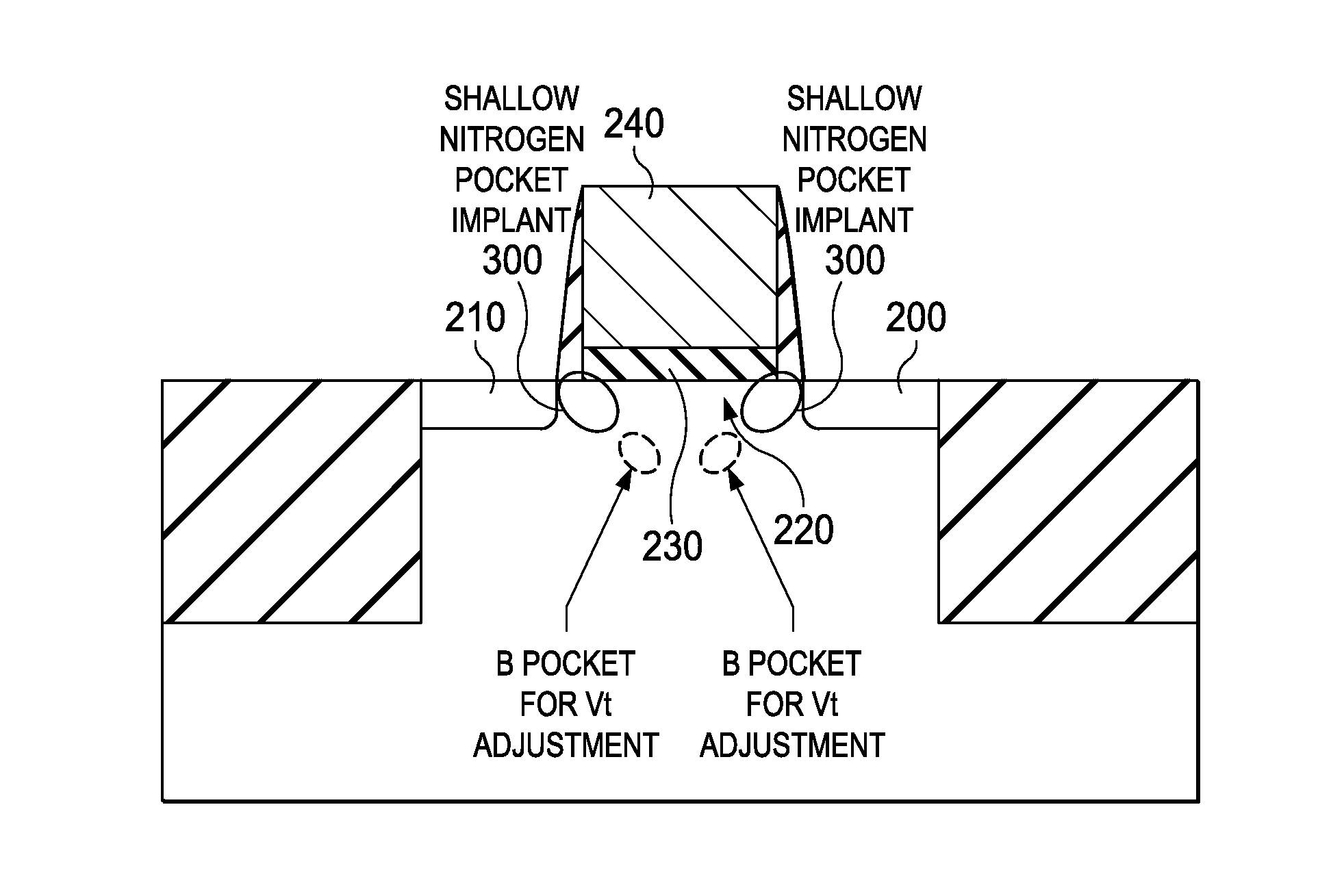Method of reducing gate leakage in a mos device by implanting gate leakage reducing species into the edge of the gate
a technology of mos device and gate edge, which is applied in the field of mos device and reducing gate leakage, can solve the problems of exponential increase of gate oxide leakage, and achieve the effects of reducing gate edge gate leakage, and reducing sram data retention failur
- Summary
- Abstract
- Description
- Claims
- Application Information
AI Technical Summary
Benefits of technology
Problems solved by technology
Method used
Image
Examples
Embodiment Construction
[0017]Consider again the sectional view of a prior art MOS device shown in FIG. 2. The p+ regions of the drain 200 and source 210 are theoretically isolated from each other by an n-channel 220 and the gate oxide 230 of gate 240. Nevertheless, due to gate edge defects in the gate oxide 230, charge leakage will occur if there is a complete line of defects across the edge of the gate oxide 230 extending from the bottom of the gate 240 to the top of the channel 220.
[0018]One embodiment of the invention will now be discussed with respect to FIG. 3, and the top view shown in FIG. 4. For ease of reference the same reference numerals will be used to depict similar structural as those in FIG. 2. Pockets 300 of a gate leakage reduction species such as nitrogen are implanted at an angle along edges of the gate 240 to place the nitrogen pockets in the gate oxide 230 along the edge of the gate 240, the angle being substantially the same as that used for any boron pocket 250 implants used for thr...
PUM
 Login to View More
Login to View More Abstract
Description
Claims
Application Information
 Login to View More
Login to View More - R&D
- Intellectual Property
- Life Sciences
- Materials
- Tech Scout
- Unparalleled Data Quality
- Higher Quality Content
- 60% Fewer Hallucinations
Browse by: Latest US Patents, China's latest patents, Technical Efficacy Thesaurus, Application Domain, Technology Topic, Popular Technical Reports.
© 2025 PatSnap. All rights reserved.Legal|Privacy policy|Modern Slavery Act Transparency Statement|Sitemap|About US| Contact US: help@patsnap.com



